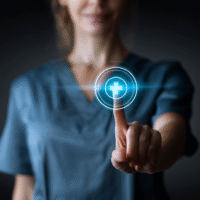Understanding the Study Results
This research looked at how a method called cognitive reappraisal works within a therapy called the Unified Protocol (UP). This therapy is used to help people with various emotional disorders, like anxiety and depression.
What Worked?
- The UP helped improve cognitive reappraisal skills. This means patients learned to manage their thoughts and emotions better.
- As patients got better at cognitive reappraisal, their anxiety and depression symptoms decreased over time.
- Improvements were most noticeable later in treatment and continued even after therapy ended.
What Didn’t Work?
- The wait-list control group, who did not receive the UP, did not show these improvements.
Benefits for Patients and Clinics
- This study shows that teaching patients cognitive reappraisal is crucial for reducing symptoms of emotional disorders.
- Clinics can use these findings to tailor treatments for better outcomes.
What Can Hospitals and Doctors Do?
- Integrate cognitive reappraisal training into existing therapy programs.
- Offer workshops or sessions focused on improving these skills.
- Use the UP as a standard treatment option for patients with various emotional disorders.
What Should Clinics Track?
- Improvements in anxiety and depression symptoms using standard scales.
- Patients’ ability to use cognitive reappraisal techniques during treatment.
- Long-term effects on emotional health after completing therapy.
AI Tools for Support
- Consider using AI-driven apps that help patients practice cognitive reappraisal skills through guided exercises.
- AI can also track patient progress and suggest adjustments to therapy based on data.
Step-by-Step Plan for Clinics
- Start by training staff on the UP and its focus on cognitive reappraisal.
- Introduce cognitive reappraisal techniques in therapy sessions.
- Use simple assessments to measure patient progress.
- Gather feedback from patients to adjust and improve the program.
- Gradually expand the program based on success stories and patient outcomes.
For more information, you can read the full research [here](https://doi.org/10.1016/j.beth.2025.04.005).


























